Inspired by conversations on the Food52 Hotline, we're sharing tips and tricks that make navigating all of our kitchens easier and more fun.
Today: Why ice is not just ice, and a few simple tricks to making better cocktails at home.
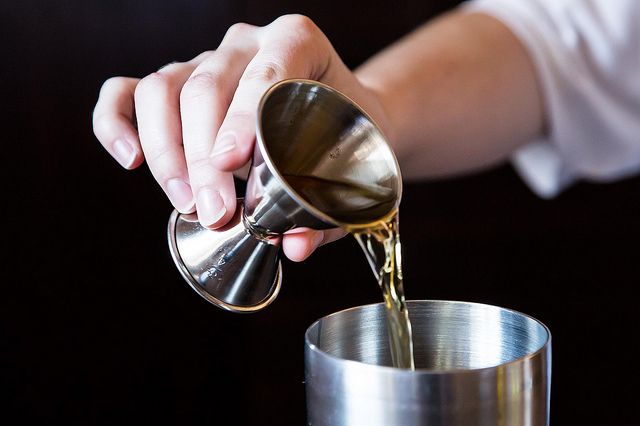
If your grandfather had asked for hand-carved ice in his Old Fashioned, he would have been laughed out of the bar. Then, ice was mostly an afterthought. Today things are different. People, now, are paying attention to ice; it can be more of an ingredient in your Old Fashioned, and less just a vehicle to make it cold. Ice is necessary -- unless, of course, you order something "neat" a little too loudly to get the girl next to you thinking you're some kind of weathered intellectual. (In which case, you should stop doing that.)
But believing that ice matters doesn't mean you have to take a chainsaw to a large block of the stuff. It doesn't mean you need to hand carve anything. And nobody outside of Brooklyn will care whether or not you have a handlebar mustache while you mix your drink.
Here's how ice can make your cocktails better, at home.
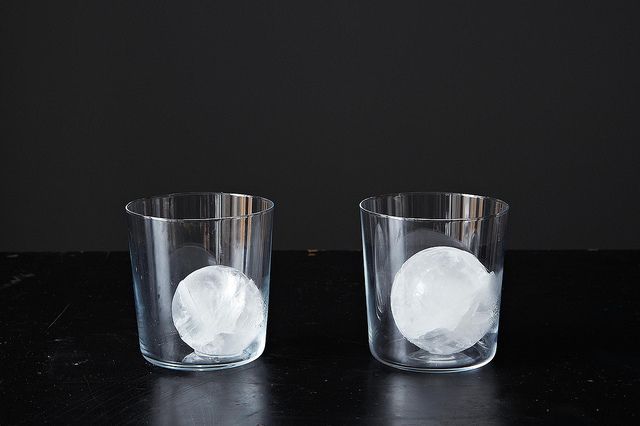
To make a better drink, the only thing you really need to keep in mind is how fast ice melts. Bigger ice means it will melt slower, which means less water will leach into your perfectly proportioned Negroni. Think about it this way: many of your favorite cocktails don't list water as an ingredient, and fast-melting ice will almost always make it one. Then the balance will be off, and the Sazerac you worked so hard on will be thin and you'll be sad. Bad ice in a whiskey on the rocks can wash years of precious aging away.
Test it out: make a cocktail with two different kinds of ice. Use nice, solid cubes in one, and whatever your freezer spits out in another. Taste, wait 5 minutes, taste again. You'll notice a difference.
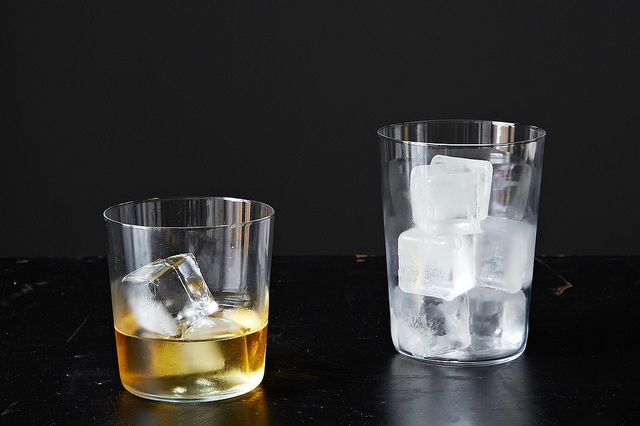
What is "good ice"?
When it comes to ice, bigger is almost always better, and solid is always best. Molds like these or these that make big, solid cubes or spheres will work perfectly in nearly any drink. Instead of buying molds, you can freeze blocks in large containers and use an ice pick to break them down, or just use a container small enough so that its eventual ice will fit inside a glass, like a muffin tin or a ramekin. Save everything else for ice baths.
Some people go a little crazy with methods for getting perfectly clear ice (and you can too!), but more often than not we're fine with good old frozen water -- it's got character, right?
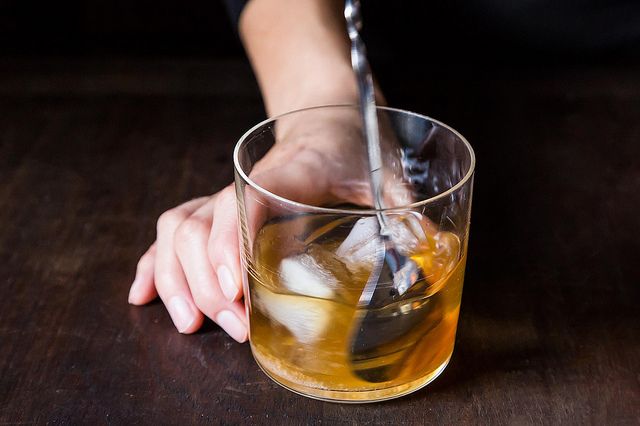
What kind of ice for which drinks?
With all of that in mind, pick your ice based on the dilution rate you want. Drinks served in lowballs like Negronis and Old Fashioneds work with both solid cubes and spheres, but the larger the cube or sphere, the slower it will melt. Read: your drink will be just as delicious as when you made it, for longer. Mixed drinks that typically go in highballs -- like a Tom Collins, Dark and Stormy, or anything with tonic or soda -- were made for glasses full of cubed ice, which helps to preserve the drinks' carbonation. Crushed ice is for Juleps and swizzles, a few of the only drinks that are appropriate, effectively, as booze slushies.
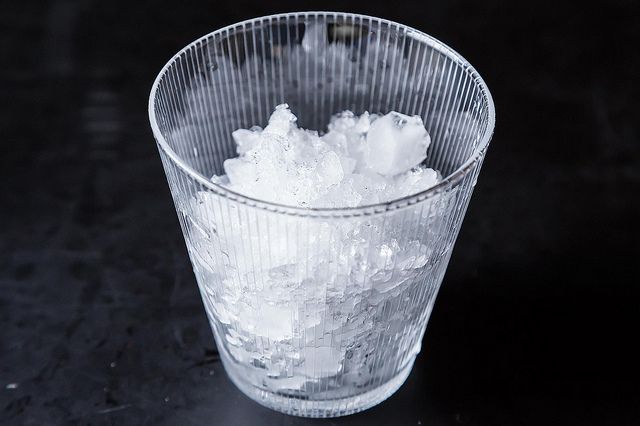
When you mix a cocktail, all of these principles still apply -- you still don't want your ice to melt. Use the same solid cubes (this size is a good rule of thumb) when you're stirring or shaking, and always use fresh ice in your glass. Cold to cold, less melt.
It's time to test our theory, don't you think?
What's your go-to ice for cocktails? Tell us in the comments!
Photos by James Ransom






See what other Food52 readers are saying.